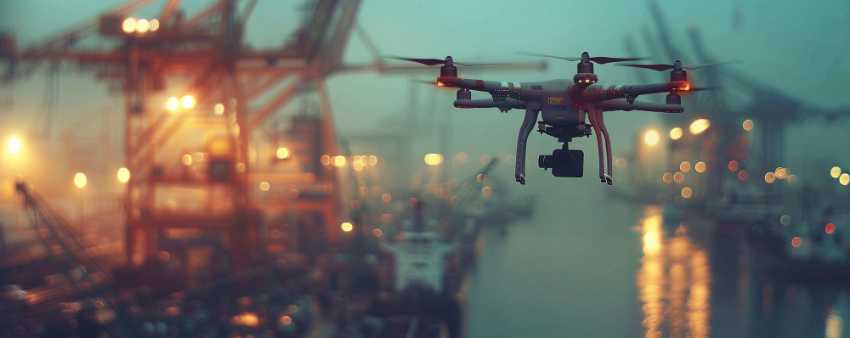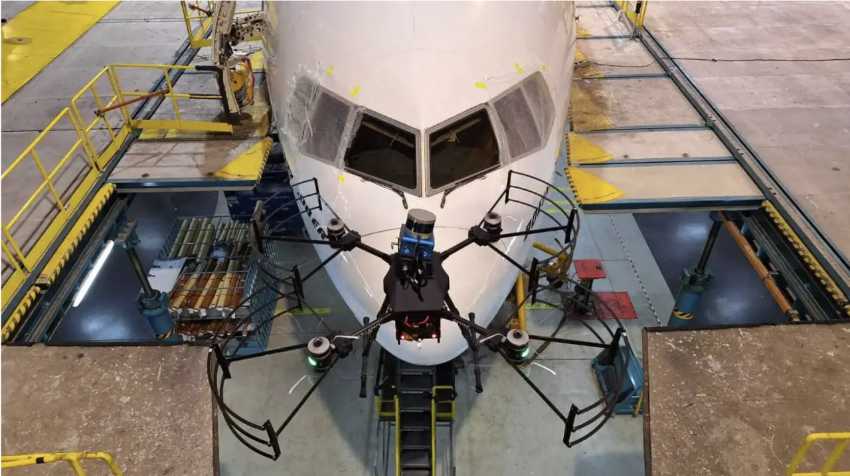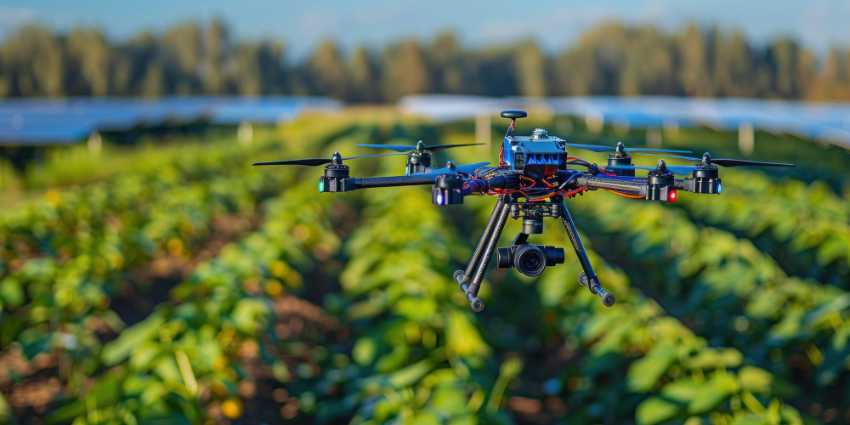The integration of AI-powered drones is rapidly changing the logistics market. Autonomous aircraft equipped with AI computer vision simplify operations by automating tasks, optimizing delivery routes, and improving inventory tracking. Drones can navigate complex environments while maintaining speed and efficiency for both urban and remote delivery.
The global market for AI in unmanned aerial vehicle technology is expected to reach around $206.9 billion by 2033, up from $12.5 billion in 2023.
Let’s explore the industries in which these technologies are used!
Definition and concept
Autonomous drones represent a significant leap forward in uncrewed aerial vehicle (UAV) technology. These drones are designed to operate without direct human control in real time, relying on advanced systems to navigate, collect data, and perform tasks independently. They employ many technologies, including machine learning, sensor systems such as LiDAR, cameras, ultrasonic sensors, GPS, and advanced navigation algorithms.

Accurate and high-quality machine-learning training datasets are vital for drones to work independently. High-quality annotations help ML models recognize obstacles, terrain, and objects more precisely.
Annotation services, like Keymakr, can scale up video labeling, including segmentation, to whatever level is necessary for a given smart drone project.
This helps autonomous drones independently plan and execute flight paths, navigate complex environments, avoid obstacles, take off, reach their destination, and return to their designated landing point without human intervention.
Some models may include swarm intelligence, which allows multiple drones to communicate and coordinate movements, improving traffic management in the air. An entire swarm of autonomous drones can more efficiently perform different levels of tasks, from routine delivery to search and rescue missions.
Automated tasks
Autonomous drones can perform a wide range of tasks in an automated manner, such as inspecting infrastructure such as power lines and pipelines, monitoring construction sites, delivering packages, surveying the area, and managing inventory in warehouses.
This month Japanese startup Terra Drone, which uses drones to survey and inspect energy infrastructure, is stepping up cooperation with Saudi Arabia’s state-owned oil company Aramco to inspect oil and gas facilities – Reuters says. Terra Drone will hold test runs to inspect the oil giant’s facilities in Saudi Arabia starting later this year and into next. The actual operation of the inspections is expected to begin in 2027.
Efficiency and safety
Autonomous drones perform labor-intensive and hazardous tasks to improve efficiency and worker safety. They can inspect structures at high altitudes, eliminating the need for scaffolding or ropes and reducing the risk of falls and other accidents. In logistics, warehouse drones can scan barcodes and track inventory in real time, minimizing errors and increasing supply chain accuracy.

Near Earth Autonomy, in cooperation with NASA and Boeing, has developed autonomous drones capable of conducting pre-flight inspections of commercial airliners. Before each flight, airliners must undergo a readiness check to ensure flight safety.
This can take up to four hours and involves workers climbing on and around the aircraft to check for problems, which can be dangerous and sometimes lead to human error. After developing the solution under NASA’s Small Business Innovation Research (SBIR) program and in partnership with Boeing, the inspection time was reduced to less than 30 minutes and eliminated any climbing.

Agriculture
Farmers are using autonomous AI-powered drones to spray crops, detect diseases early, and monitor plant health without having to walk the field themselves. These drones can fly over farms, analyze soil conditions, and detect pests before they cause severe damage.
Aerobotics, a South African drone company, has transformed US agriculture by using AI to help fruit and nut farmers. Aerobotics’ technology, which operates in 18 countries, with the US being the largest market, helps to increase crop yields and optimize resource use, especially in the face of climate change. The AI software analyzes data collected by uncrewed aerial vehicles to assess the health and status of fruit, predict yields, and help in planning for packing plants, sales departments, and retailers.
Future trends
New approaches to autonomous drones make them more independent and capable of solving complex tasks. AI-assisted navigation is improving, and this shift enhances their functionality in unpredictable conditions, such as crowded urban areas, natural disaster zones, and changing weather environments.
Companies also heavily invest in advanced battery technologies that provide longer flight times, reduced weight, and fast-charging capabilities. The development of wireless charging stations allows drones to recharge mid-mission or during brief stops, reducing downtime and enabling continuous operation. These innovations pave the way for 24/7 deployment of drones in emergency response, infrastructure monitoring, and logistics.
Another emerging trend is edge computing in drones, allowing data processing to occur onboard rather than being sent to the cloud. This reduces latency and enables drones to make faster, more accurate decisions.
With the integration of 5G networks and improvements in AI chips, drones are becoming more connected, smarter, and more responsive — ready to play a vital role in the future of smart cities, agriculture, defense, and logistics.


